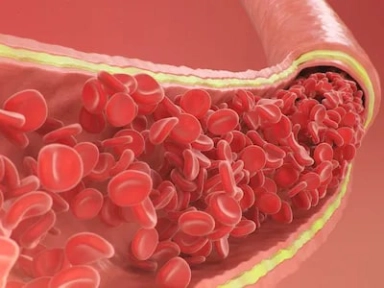PCSK9i after hospital discharge for acute MI
Factors associated with time to PCSK9i initiation following hospital discharge for acute myocardial infarction
Key Takeaway
In this retrospective cohort analysis of patients with an AMI hospitalization:
- 42% of patients who initiated a PCSK9i during the first year after hospital discharge did so within 89 days
- Statin use was associated with a lower possibility, whereas ezetimibe use, with a higher possibility of initiating a PCSK9i within 89 days following hospital discharge
- Many patients had a recurrent ASCVD event prior to PCSK9i initiation–Cumulative incidence for recurrent ASCVD events:
- 8.0% at 90 days*
- 10.5% at 180 days*
- 12.5% at 365 days*
Why This Matters
- Risk for recurrent ASCVD events is high following hospital discharge of patients with AMI.
- In-hospital initiation of a PCSK9i in these patients has lowered the levels of LDL-C following discharge
- Determining characteristics of patients with AMI, who initiate PCSK9i following hospital discharge may help to identify unmet treatment needs in this population, which has high risk for recurrent events.
Study Design
A retrospective cohort study utilizing data from patients who had an AMI hospitalization with government health insurance through Medicare or with commercial health insurance in the MarketScan database.
Inclusion Criteria
- Patients aged ≥21 and <65
- Medicare beneficiaries ≥66 years of age who had an AMI hospitalization† and initiated a PCSK9i‡, within 365 days following their hospital discharge
Patient Categorization
Patients were categorized into three groups based on time of initiation of PCSK9i following hospital discharge for AMI:
- 0–89 days
- 90–179 days
- 180–365 days
Occurrence of ASCVD events§ was assessed between hospital discharge for each patient’s index AMI¶and their first fill for a PCSK9i.
Key Results
- In total, 1,352 patients with government health insurance through the Medicare program and 353 patients with commercial health insurance in the MarketScan database were included.
-
Overall, 42%, 25%, and 33% of patients initiated a PCSK9i 0–89 days, 90–179 days, and 180–365 days following AMI hospital discharge, respectively.
-
114 days median time to PCSK9i initiation following hospital discharge for AMI
| Patient Characteristics | |
| Patients in 0–89 days group vs 180–365 days group were less likely to: |
Patients in 0–89 days group vs 180–365 days group were more likely to: |
|
|
|
|
Factors Associated With Possibility of Initiating a PCSK9i 0–89 Days vs 180–365 Days* |
|
| Lower Possibility | Higher Possibility |
|
|
| Cumulative incidence of recurrent ascvd events prior to pcsk9i initiation | |
|
At 356 days*:
|
Limitations
-
Owing to the lack of data on LDL-C levels, it was not possible to determine whether patients initiated a PCSK9i in accordance with the 2018 AHA/ACC cholesterol guideline recommendations.
-
Data were only available for prescriptions filled, but not for written prescriptions.
-
It was not possible to determine whether prescriptions required a prior authorization, which may have delayed the time to fill a PCSK9i.
-
Most of the claims were filed before the current AHA/ACC blood cholesterol guidelines were published.
*Following hospital discharge for AMI.
†Between 1 July 2015 – 31 December 2018.
‡Evolocumab or alirocumab.
§Recurrent AMI, CHD (i.e., AMI or coronary revascularization), ischemic stroke, and PAD.
¶Date of discharge for the earliest AMI hospitalization closest to and after July 1, 2015.
ACC, American College of Cardiology; AHA, American Heart Association; AMI, Acute Myocardial Infarction; ASCVD, Atherosclerotic Cardiovascular Disease; CABG, Coronary Artery Bypass Graft Surgery; CHD, Coronary Heart Disease; CI, Confidence Interval; HF, Hart Failure; LDL-C, Low-density Lipoprotein Cholesterol; OR, Odds Ratio; PAD, Peripheral Artery Disease; PCI, Percutaneous Coronary Intervention; PCSK9i, Proprotein Convertase Subtilisin/Kexin Type 9 inhibitor.
- McKinley EC, Bittner VA, Brown TM, Chen L, Colantonio LD, Exter J, et al. Factors associated with time to initiation of a PCSK9 inhibitor after hospital discharge for acute myocardial infarction. J Clin Lipidol. 2021; S1933-2874(21)00257-9. doi: 10.1016/j. jacl.2021.11.001. Online ahead of print. PMID: 34848176.


.webp/jcr:content/Lipid-lowering-therapy-thumb%20(2).webp)

.webp/jcr:content/Evaluation-of-lipid-management-following-ACS-thumb%20(1).webp)